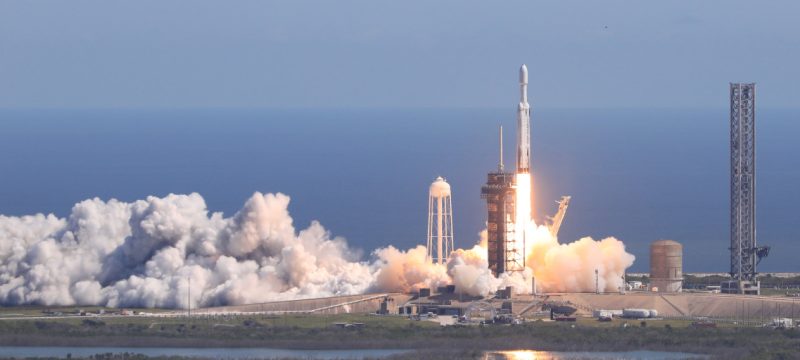SpaceX Falcon Heavy rocket successfully launched from Cape Canaveral, Florida, carrying NASA’s Europa Clipper probe on a mission to explore Jupiter’s icy moon, Europa. The spacecraft is set on a 1.8-billion-mile journey that will span five and a half years, designed to investigate the potential for alien life beneath Europa’s frozen surface.
The Clipper’s journey includes a complex series of gravity assists, beginning with Mars next year, followed by a flyby around Earth in 2026, before heading towards Jupiter. The spacecraft is expected to arrive at Europa in 2030, where it will gather data for over four years. At the end of its mission, Clipper will dive into one of Jupiter’s moons to prevent any contamination of Europa.
Originally planned for launch on October 10, the mission was delayed due to Hurricane Milton, but clear skies greeted the rocket on its successful launch day. This mission marks a significant scientific milestone, as researchers have long pushed for a closer examination of Europa, especially since NASA’s Galileo probe suggested the existence of a global subterranean ocean heated by Jupiter’s gravitational forces. With water, heat, and potentially organic compounds, Europa is viewed as one of the solar system’s most promising sites for discovering life beyond Earth.
Read More: NASA Discovers Diamond-Rich Exoplanet Five Times Larger Than Earth
During its flybys of Europa, Clipper will use its scientific instruments to study the moon’s ocean dynamics and search for organic compounds, essential clues in the hunt for extraterrestrial life. The $5 billion mission, designed and constructed by NASA’s Jet Propulsion Laboratory, represents NASA’s largest planetary probe to date.
SpaceX’s Falcon Heavy rocket, with its three boosters, provided the necessary lift for Clipper’s launch. Unlike typical launches where SpaceX recovers the boosters, this time they were fully expended to ensure Clipper’s escape velocity. However, SpaceX plans to recover the protective fairings used during launch.
Matthew Shindell from the Smithsonian National Air and Space Museum highlighted the importance of having new, powerful rockets like the Falcon Heavy, noting that a mission of this scale wouldn’t have been possible just a decade ago. The Europa Clipper mission is a monumental step in humanity’s quest to explore the outer solar system and search for signs of life.









